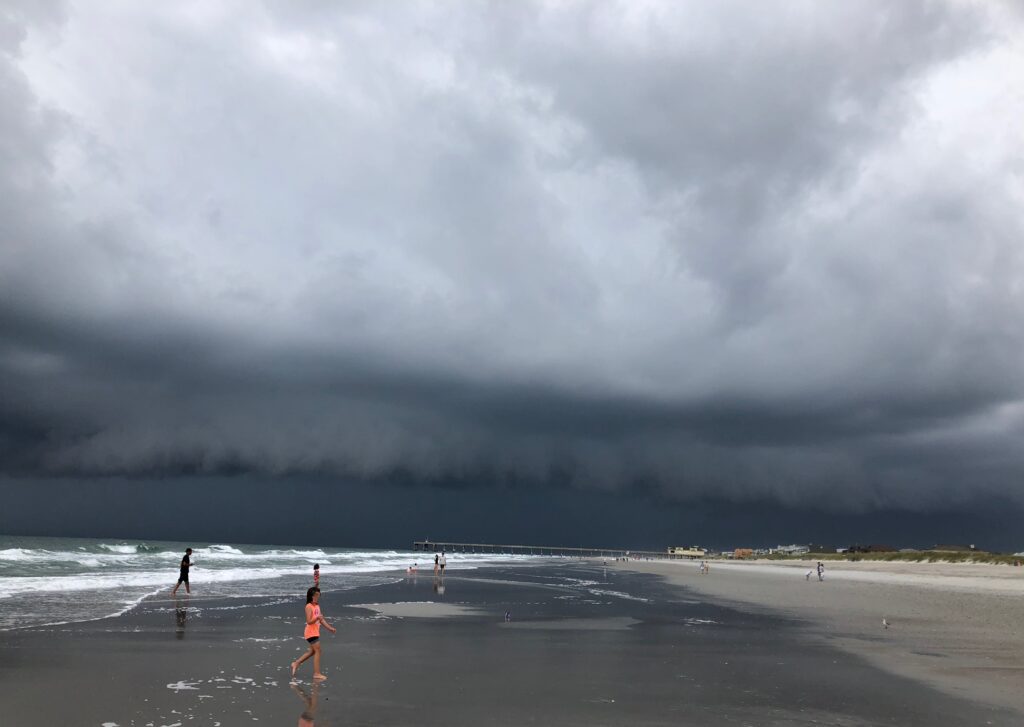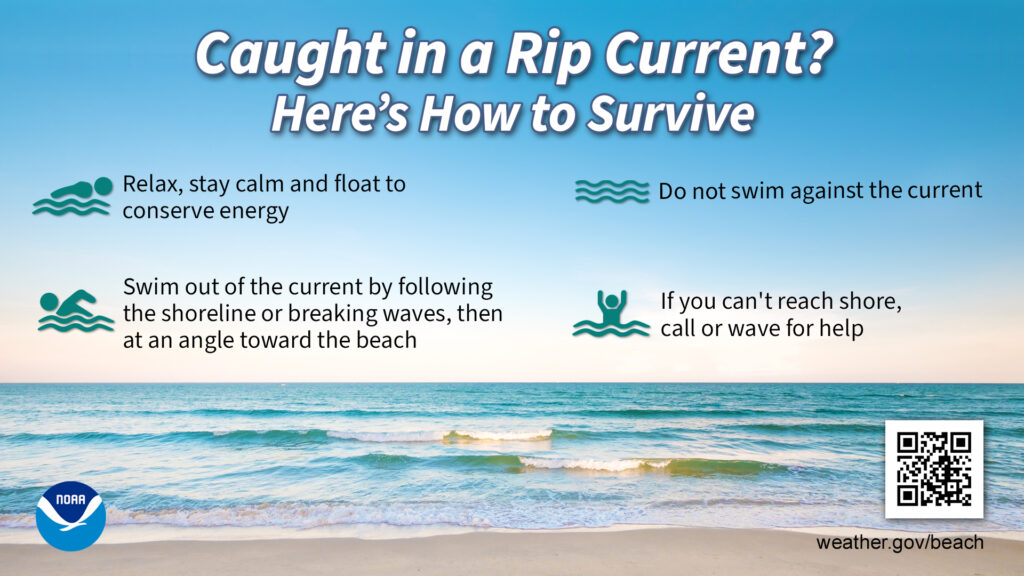How To End the Summer Safely
By Margot Lester, SORS volunteer
Late summer safety tips
We’re heading into the last days of summer and the first days of school. Here are a few reminders on how to stay safe when enjoying some downtime or heading to class.
Tips for a safer back-to-school season
When school starts, there’sa lot more people walking, biking, skateboarding and driving, especially in the mornings. And the new routines can be distracting for everyone.
- Drivers: Know the locations of school/city bus stops and crosswalks near K-12 facilities and campus. Lower your speed and raise your awareness in these areas.
- Pedestrians: If there isn’t a sidewalk, walk facing traffic and use crosswalks where available.
- Bikers: Wear a helmet and outfit your bike with a taillight. Travel in the same direction as vehicles and use bike lanes when available.
How to be safe in and on the water
There’s still plenty of good swimming weather ahead. Visiting a beach with lifeguards is the safest option, but not always possible. That’s why wherever and whenever you’re near, on or in the water, it’s always best to have a buddy around and to wear a life vest.
Check local conditions
Here in the Triangle, this summer’s flooding increased hazards in our lakes, creeks and rivers. One of the most common issues is submerged debris. That’s why it’s smart to scout the water before diving, paddling or motoring. Remember, too, that banks could still be unstable, making it easier to fall in. It’s also smart to check for local safe swimming sites that monitor water quality, including the Haw River Assembly’s Swim Guide for the river and Jordan Lake. Going further afield? Download the Waterkeepers’ SwimGuide app.

When you need help, our Technical Rescue Team is ready to respond. Learn more about this unit at sors.us/trt. Photo by Sahil Sethi.
Watch the weather
Checking the forecast before you go and staying alert while you’re out is important since flash floods and lightning can occur quickly and conditions can deteriorate fast. Locally, you can sign up for emergency alerts from the county. It’s also smart to opt in to alerts from your favorite weather app and enable location tracking.
Should a flash flood occur, get away from the area to higher ground as quickly as possible. Don’t be tempted to wade or swim in rushing water. It takes only one inch to knock you down. Get more tips for dealing with floodwater.
You also want to stay calm and seek take immediate action when you hear thunder or see lightning.
- Swimmers, waders and anglers: Get out of the water and inside a building or vehicle if possible.
- Paddlers, tubers and wafters: Go to shore as quickly as possible, seek shelter if possible, if not, crouch on a pad, your tube or your flotation device with your feet close together. Ditch metal paddles.
- Power boaters: Have a lightning protection system onboard that’s been inspected recently. When a storm comes up, get to the center of the cabin if there is one; if not, get as low as possible. Unplug major electronic equipment, including the radio, and lower or otherwise secure radio antennas. Stay away from metal rigging, etc., until the storm is over.

Stay alert to weather conditions and be ready to move fast because big storms like this one at Wrightsville Beach can blow up in a hurry, especially in the summer. Photo by Margot Lester.
Know how to escape a rip current
If you’re at the coast, know the water conditions and obey the red flags that signal the water’s unsafe. If you get caught in a riptide, follow these steps:
- Try to stay calm to conserve your energy
- Don’t try to swim against the current.
- Lean back and float to catch your breath and feel which way the current is flowing.
- If people are near you or on shore, wave your hands and yell to get their attention.
- Swim with the flow until you feel it easing, then swim toward shore.
When you’re at the beach with friends, go over this strategy with everyone so you all know what to do.

Respond when someone is struggling in the water
If someone does get in trouble, be careful about how you respond. A lot of would-be rescuers find themselves struggling in the water, too. Even if you’re a strong swimmer, it’s safest for everyone to stay out of the water. Instead:
- Call for help. If you’re alone, call 911. If someone else is there, one of you should keep eyes on the swimmer and the other make the call.
- Reach out to them. Extend a branch, board or oar for them to grab onto so you can try to pull them to dry land. Don’t lean over too far and if you feel yourself falling toward the water, let go.
- Throw to them. Toss something that floats, like a raft, ball or cooler, to help them stay above water. Bonus points if it’s got a rope attached so you can haul them in. Remember to let it go; however, if you feel like you’re going to go in, too.
Find more ways to stay safe while recreating.
Advice for a better cookout
Labor Day weekend is a big time for firing up the grill. Cooking out is fun, but it can be dangerous if you’re not paying attention. When it comes to cooking injuries, grilling is one of the top five causes, and grill-related fires cause the most average loss in dollars per home structure fire, according to National Fire Protection Association data. To keep your cookout chill:
- Position portable grills in an open, level area away from buildings, trees and shrubs.
- Check propane hoses for leaks or breaks and charcoal grill pans for holes every time.
- Have a hose, water bucket or fire extinguisher nearby to quickly dowse flames.
- Establish a perimeter around the grill that excludes kids and pets.
- Avoid grilling in loose clothing that could dangle over the fire and light.
- Use utensils and oven mitts rated for high-heat and open flame.
- Don’t leave the grill unattended.
- Don’t add starter fluid or other flammable liquids to flames or glowing coals.
- Let the coals cool completely before disposing in a metal container with a lid.
- If you smell gas when grilling or can’t put out the flames, move away immediately and call 911.
Bonus tip
Did you know we post safety and preparedness tips on our social media channels? Follow us on Facebook, Instagram, Threads and LinkedIn for useful advice.
See how you can support our work.
Margot Lester, a SORS strategic communications and advocacy volunteer, is certified in wilderness and remote first aid and is a former lifeguard and water safety instructor.
 The South Orange Dispatch is a monthly column on Chapelboro by the South Orange Rescue Squad: an all volunteer, 501c3 non-profit providing EMS and technical rescue services in the Carrboro-Chapel Hill area of Orange County since 1971.
The South Orange Dispatch is a monthly column on Chapelboro by the South Orange Rescue Squad: an all volunteer, 501c3 non-profit providing EMS and technical rescue services in the Carrboro-Chapel Hill area of Orange County since 1971.


